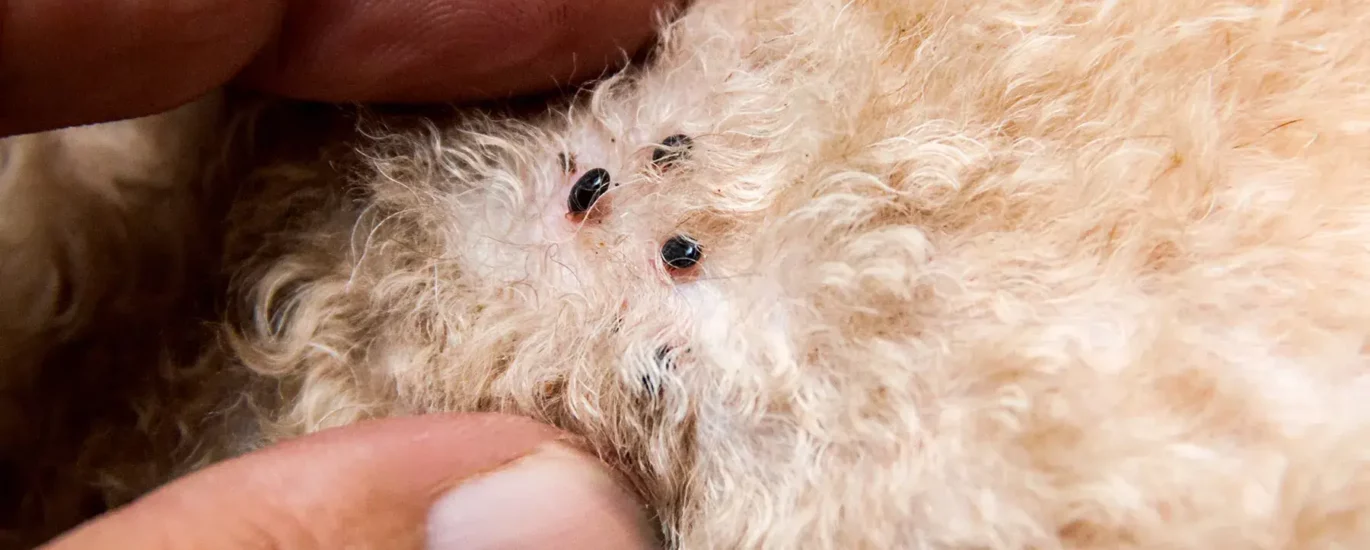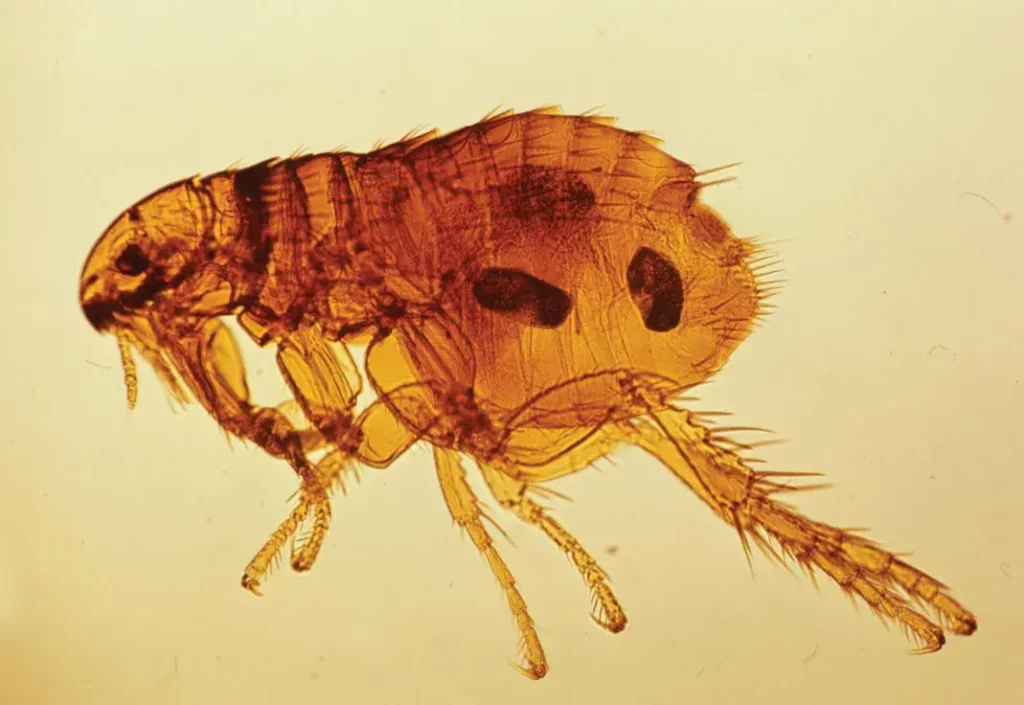


Fleas are those super small bugs that bother pets and people. They’re more common than you might think! However, many people don’t know what do fleas look like to the human eye, so we can find and get rid of them. By understanding their physical appearance, we can protect ourselves, our pets, and our homes from these annoying pests. Fleas are not just annoying, they can also make us sick. They love to suck blood from warm-blooded animals, and they can spread diseases and cause allergies. Knowing what do fleas look like to the human eye helps us to spot them quickly and take action to get rid of them.
Identifying fleas from human eye is very important. They are very expert in hiding themselves because they are small and fast. But if we know what they look like, we can find them and stop them from multiplying. When we know what fleas look like, we can act fast to stop them. This helps prevent bites, skin problems, and the spread of diseases. It is also helpful to know how fleas are different from other bugs that might look similar, like bed bugs or ticks. Knowing their unique characteristics helps us figure out the right way to get rid of them.
In this article, we’ll explain what fleas look like. We’ll talk about their size, color, body shape, and special features that help us recognize them. Understanding their appearance will make it easier for you to find, control, and prevent flea infestations effectively.
Let’s talk about these little pests called fleas. They are super tiny insects that can cause big problems. Fleas love warm-blooded animals, like cats, dogs, and even people! They can jump onto our pets and make them itchy and uncomfortable. They can also bite us and make our skin red and itchy too. When we talk about fleas we should remember that their bites can be annoying and even make us sick. Fleas feed on blood, and their bites can make us itch a lot. Sometimes, these bites can even give us allergies or spread diseases. Finding and identifying fleas can be tricky because they are small and fast. But if we know what they look like, we can spot them and take action quickly. This helps us prevent getting bitten and keeps us safe from the health risks they can bring.
Now let’s move to the physical appearance of fleas that how they look like from a normal human eye? We’ll talk about their size, color, body shape, and special features that help us recognize them. So let’s start exploring:
Fleas are super small, like the size of a tiny pinhead, measuring between 1 to 4 millimeters in length. They are hard to spot because they’re so tiny! Fleas have a unique body shape. They are very flat, like little pancakes. This helps them move easily through fur or even clothing. They can sneak into small spaces and find a comfy spot to bite and feed. Fleas have six legs, just like most insects. Their back legs are really strong, and that’s what helps them jump really far. It is incredible how high and far they can jump for their size!

In terms of color, fleas are usually reddish-brown or black. They can look slightly different depending on the type of flea, but those are the most common colors. Their dark color helps them hide in fur or hair, making it harder for us to see them. So, if you ever get a chance to see a flea up close, you’ll notice how tiny they are, their flat body, their six legs built for jumping, and their reddish-brown or black color. Knowing these things helps us recognize them and take action to keep them away from our pets and ourselves.
Let’s talk about the special things that make fleas unique. These features help us identify them and understand how they survive. Fleas have long back legs that are great for jumping. They can jump really far compared to their small size. It is like they have their own little trampolines! On their legs, fleas have tiny hooks called spines. These help them move around and stick onto fur or clothing. They can hold on tight to their hosts, like our pets or even us, as they move around.
When it’s time to eat, fleas have special mouthparts. These parts are designed to pierce the skin and feed on blood. They have sharp, needle-like structures that let them bite and get their food. These special features—long back legs for jumping, leg spines for moving and holding on, and special mouthparts for feeding—help fleas survive and find warm-blooded hosts like pets and humans.
Understanding how fleas grow and develop is really important when it comes to getting rid of them. Let’s take a look at the different stages in a flea’s life.
Fleas start as tiny eggs. These eggs are laid by adult fleas and can be found on the host (like our pets) or in the surrounding environment. The eggs are so small that we can’t see them easily. After a short time, the eggs hatch into larvae.
Once the eggs hatch, we get flea larvae. These larvae look like small worms and they like to hide in dark places. They eat things like flea droppings and other yucky stuff they find around. They grow and change over a few weeks, molting several times.
After the larvae have grown enough, they spin a sticky cocoon around themselves. This cocoon helps protect them. Inside the cocoon, they change into adult fleas. The pupa stage can last for a little while, sometimes a few days or even longer, depending on the environment.
When the adult flea is fully developed, it breaks out of the cocoon. These are the fleas we usually see. They can jump onto pets or people and start feeding on blood. Female fleas can lay lots of eggs, sometimes hundreds, during their lifetime. Adult fleas can live for a few weeks to a few months.
Getting rid of fleas can be tough because they are tough creatures. They can survive in different environments and reproduce quickly. That’s why it’s important to understand the flea life cycle. If we only treat the adult fleas, there may still be eggs, larvae, and pupae waiting to grow into new fleas. To get rid of them, we need to use treatments that target all the stages of their life cycle. Fleas can cause big problems if left unchecked. They can multiply fast and become a big nuisance. Regular cleaning, vacuuming, and treating our pets and their surroundings are important steps to stop fleas from coming back.
Identifying fleas is important for effective control. In your home, check carpets, rugs, and furniture for jumping insects or dark specks (fleas and flea dirt). Examine pet bedding for live fleas, flea dirt, or eggs. Outdoors, inspect shady areas where pets rest and check pet toys. Signs of infestation include itching, red bite marks, and flea dirt. Inspect pets by examining their fur and using a flea comb. Take prompt action to prevent further spread and discomfort.
To effectively deal with flea infestations, follow these tips:
By taking these steps, you can effectively combat flea infestations and ensure the well-being of your pets and home.
Understanding what fleas look like to the human eye is important for identification and control. By recognizing their small size, flattened body shape, and reddish-brown or black coloration, we can easily spot these tiny pests. Identifying fleas in our environment, such as homes, pet bedding, and outdoor areas, helps prevent bites and health risks. Regular pet grooming, vacuuming, and washing bedding are important preventive measures. Consulting a veterinarian for pet-specific flea control products and seeking professional pest control services for severe infestations are recommended. By taking these steps, we can effectively combat flea infestations and maintain a flea-free environment for ourselves and our pets. Stay vigilant in the fight against fleas.